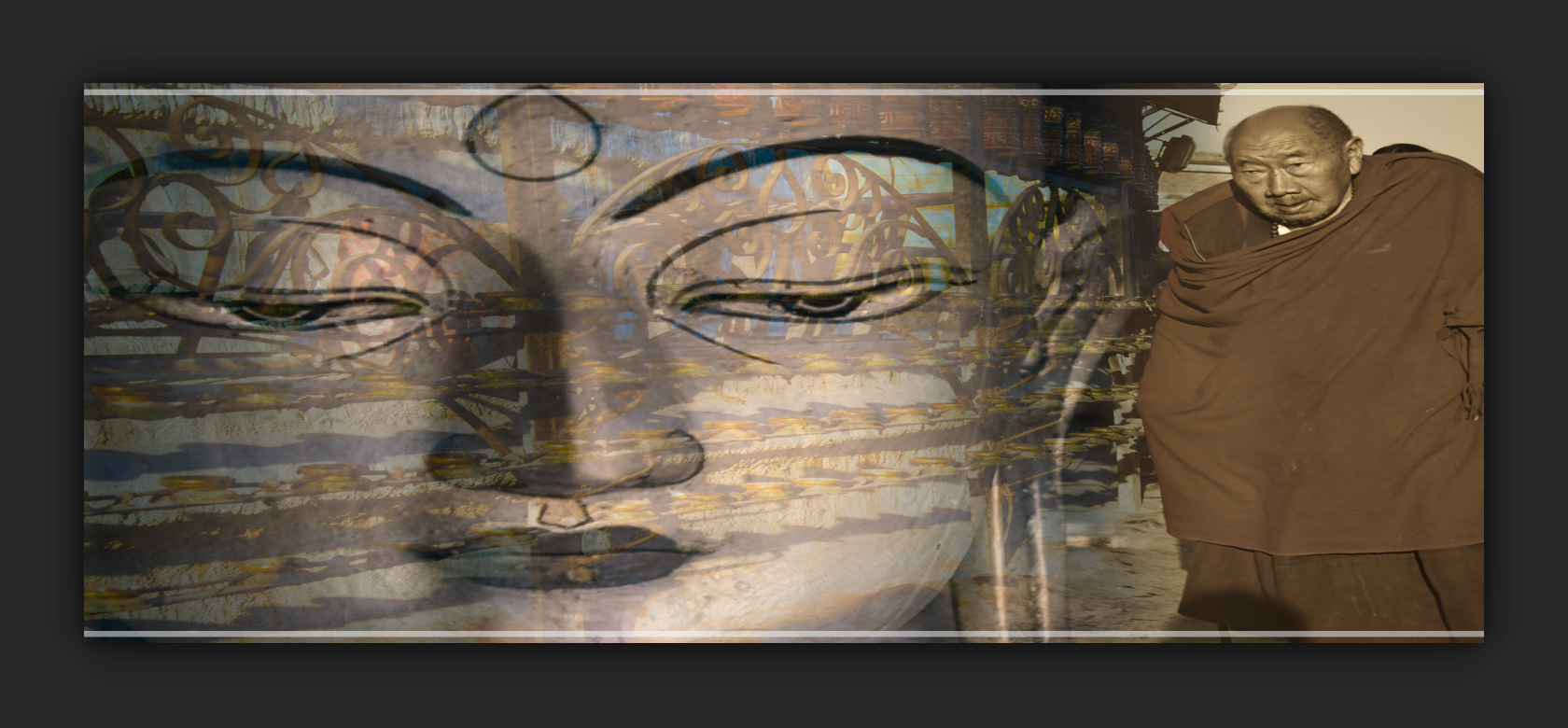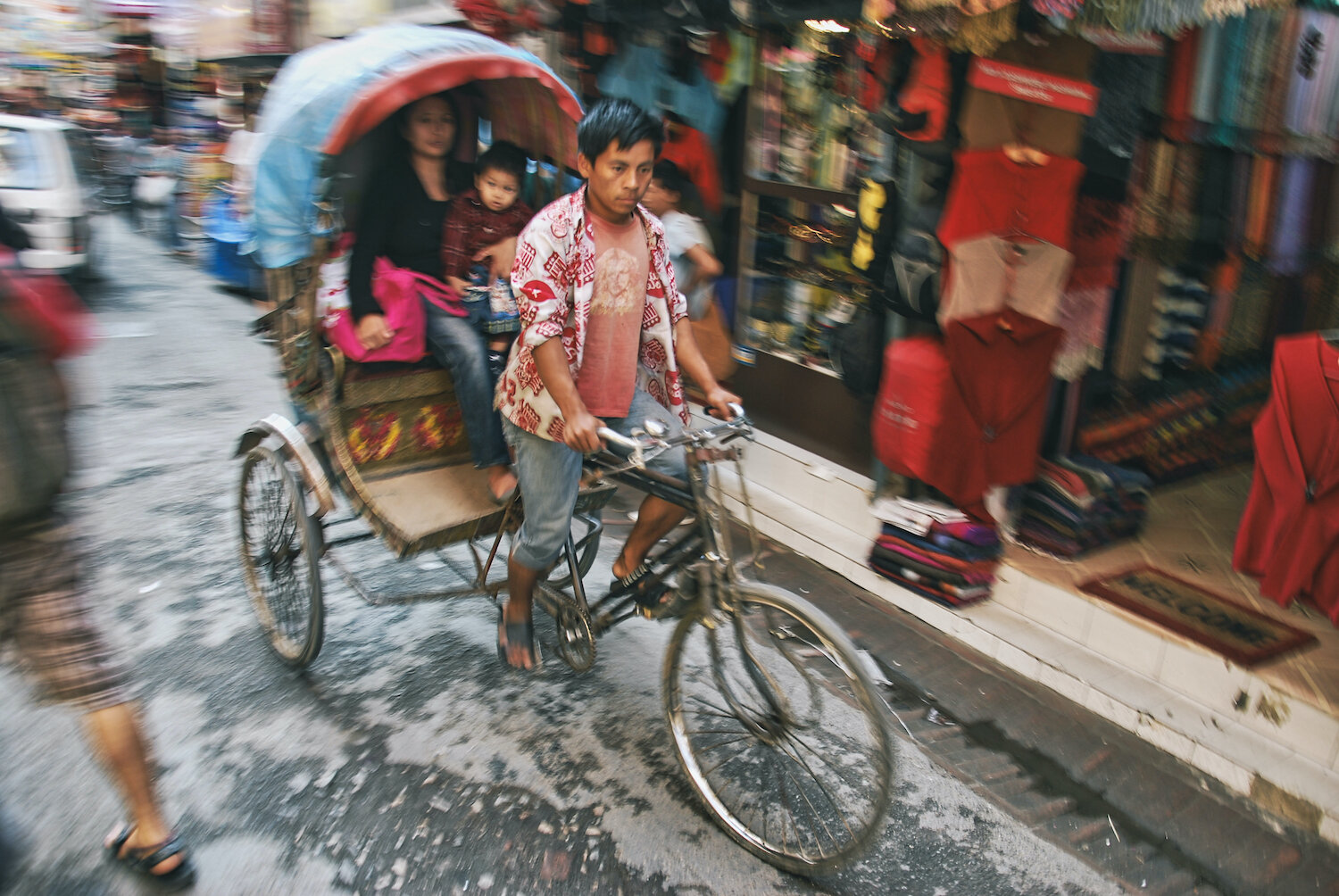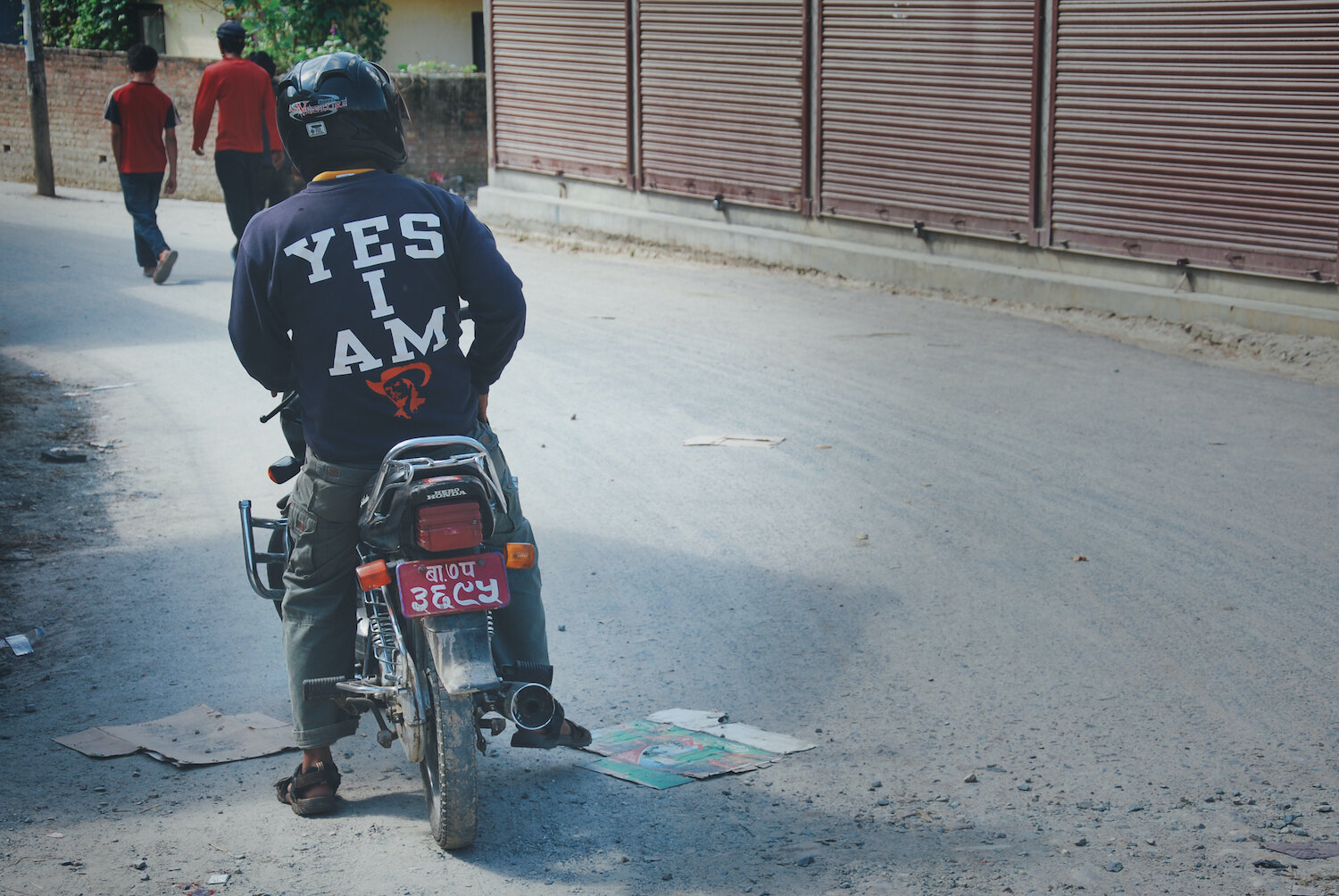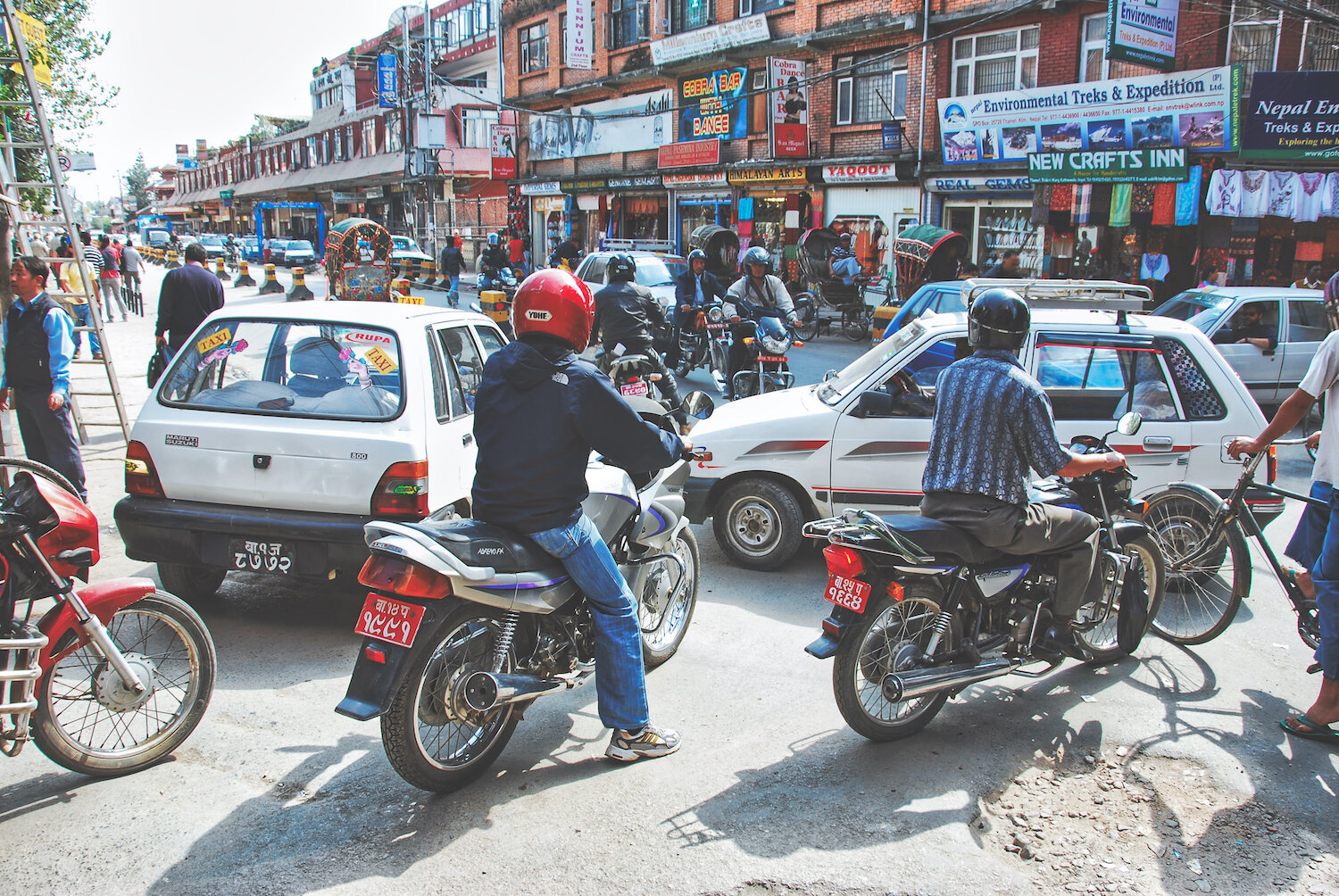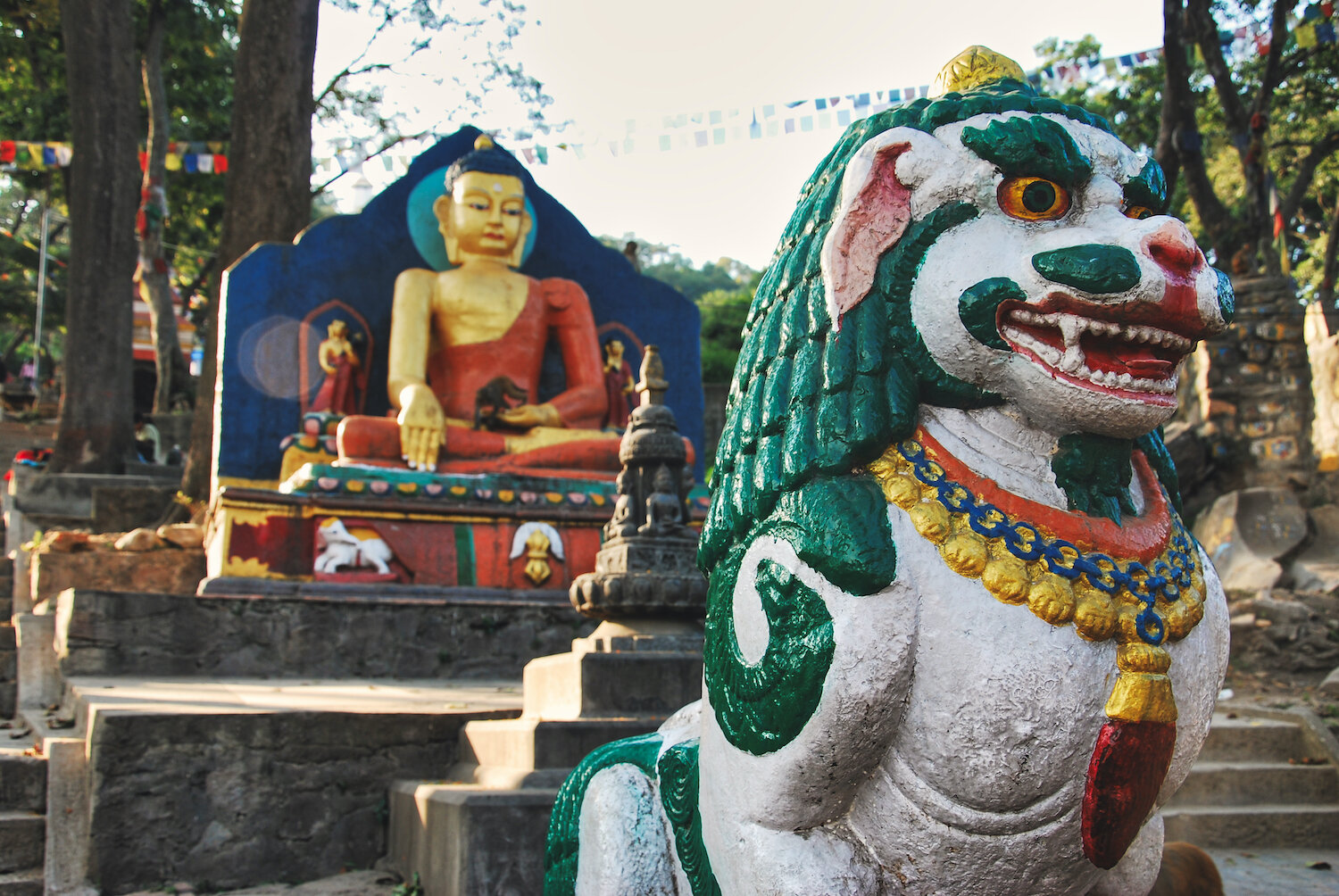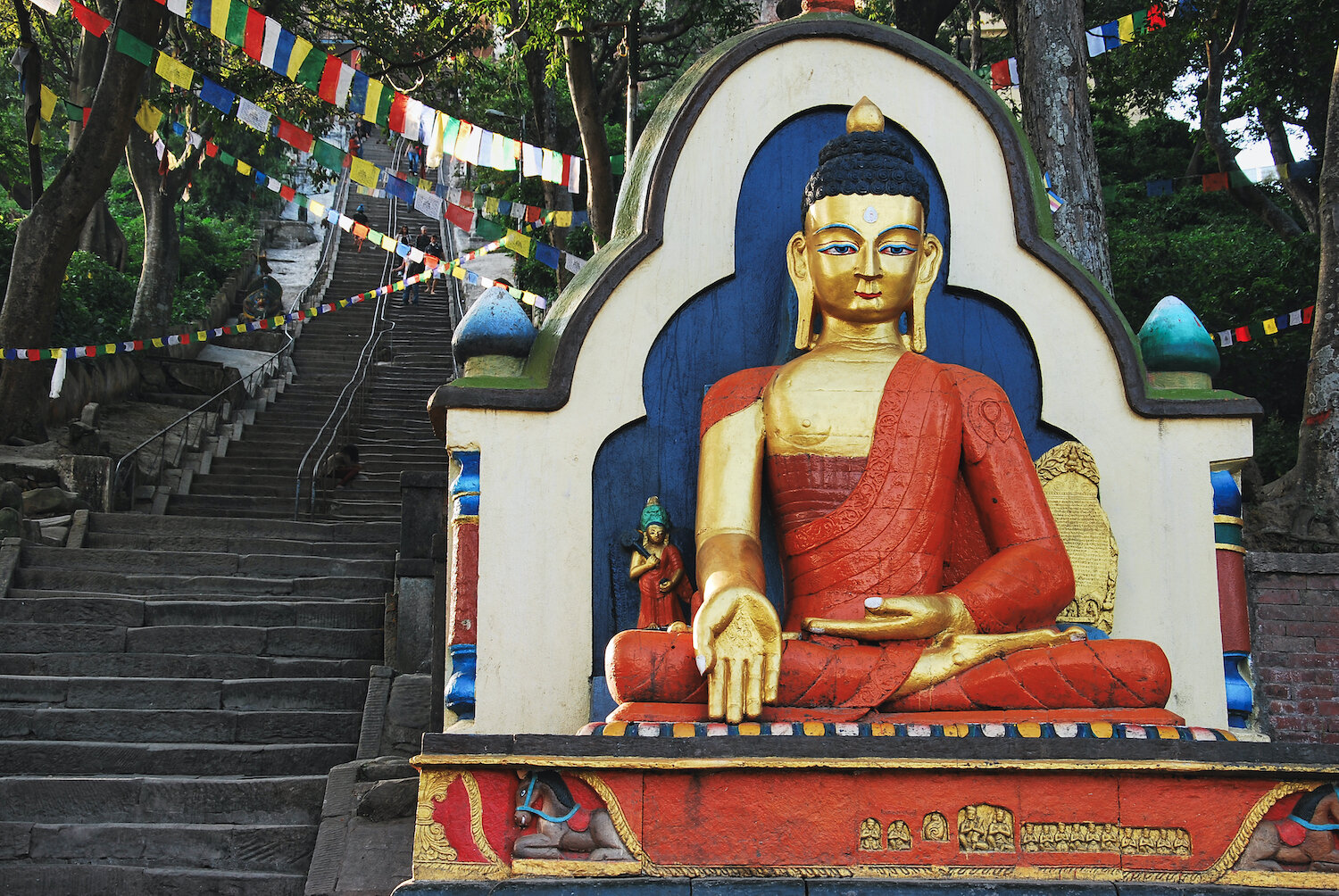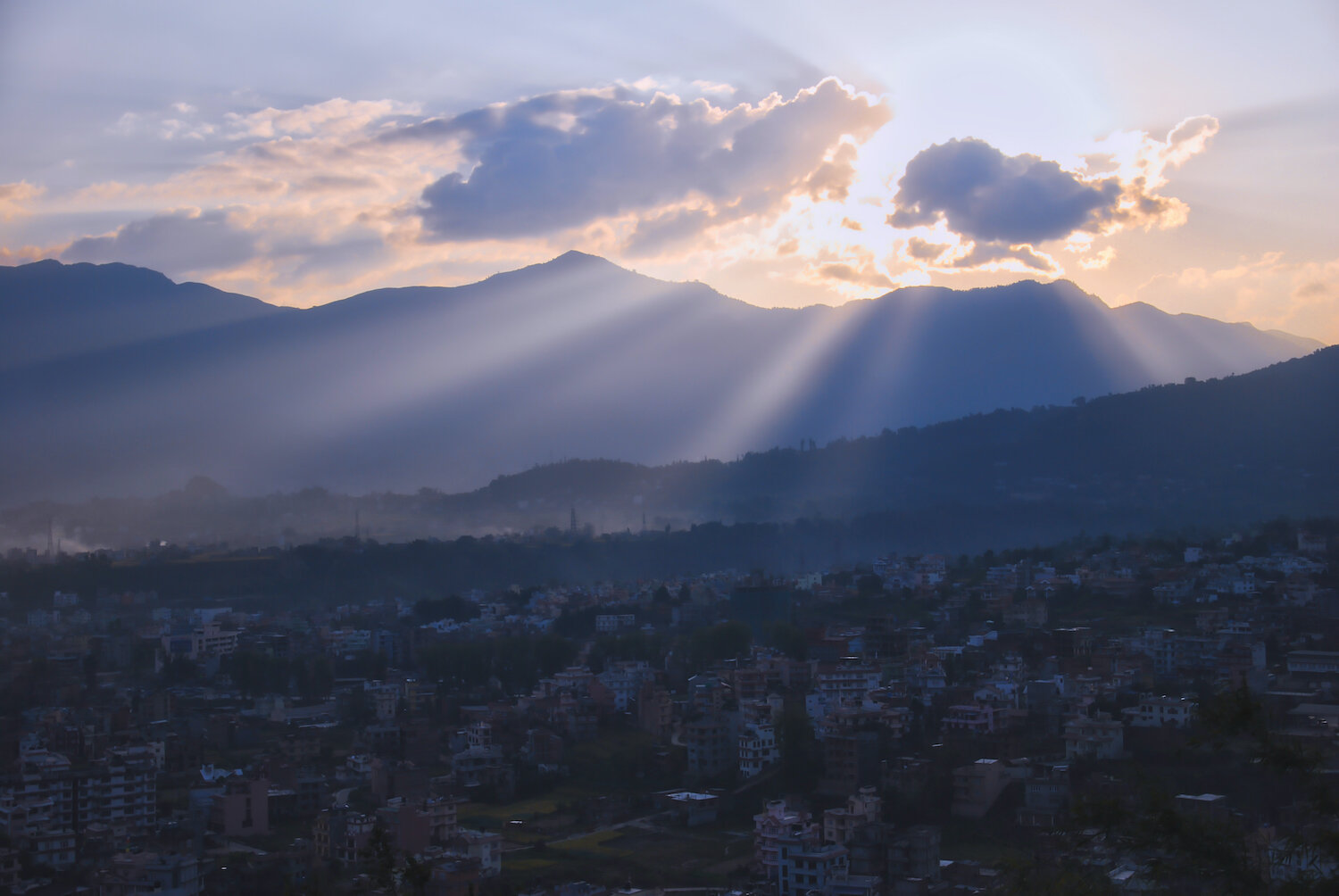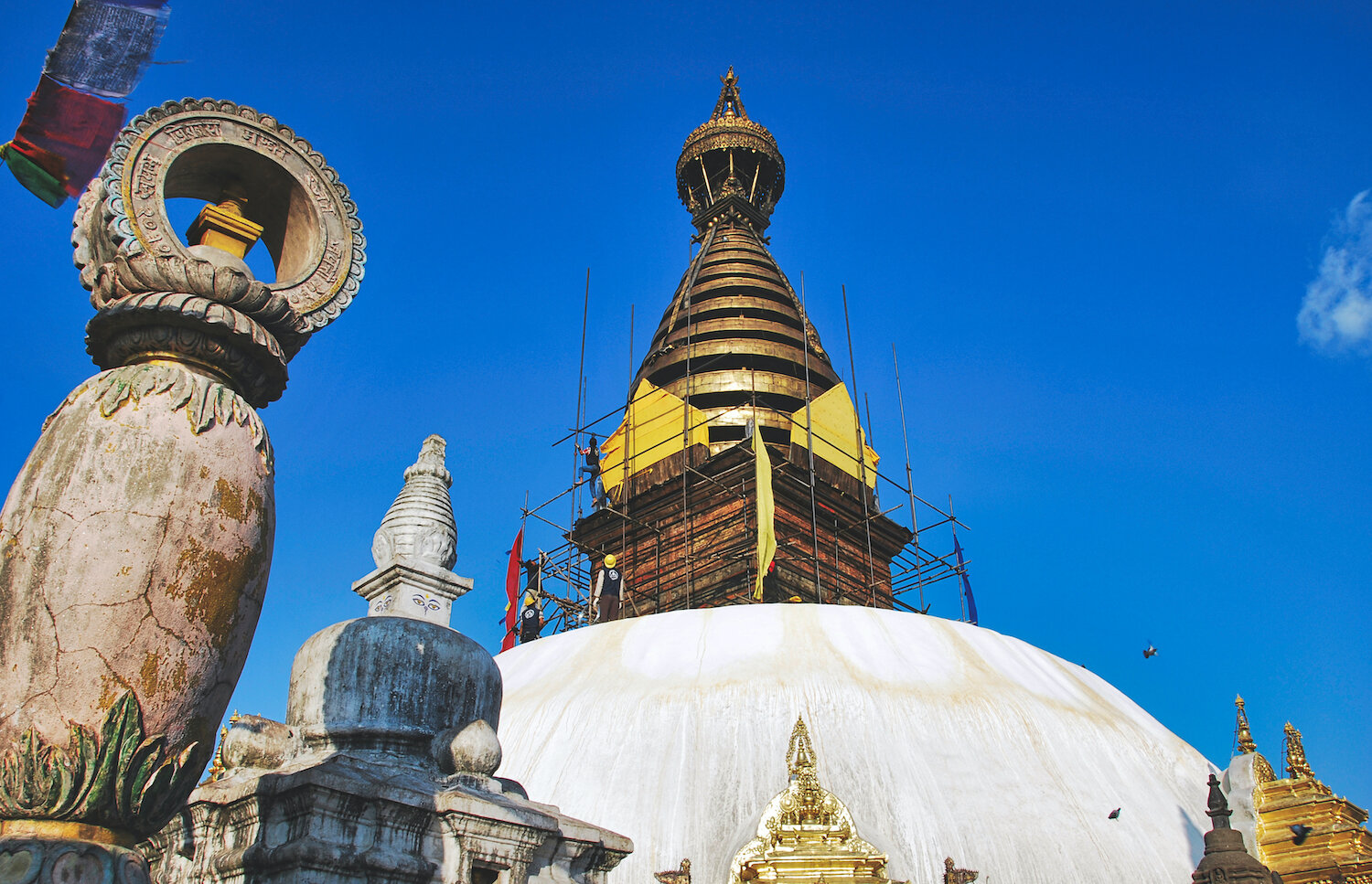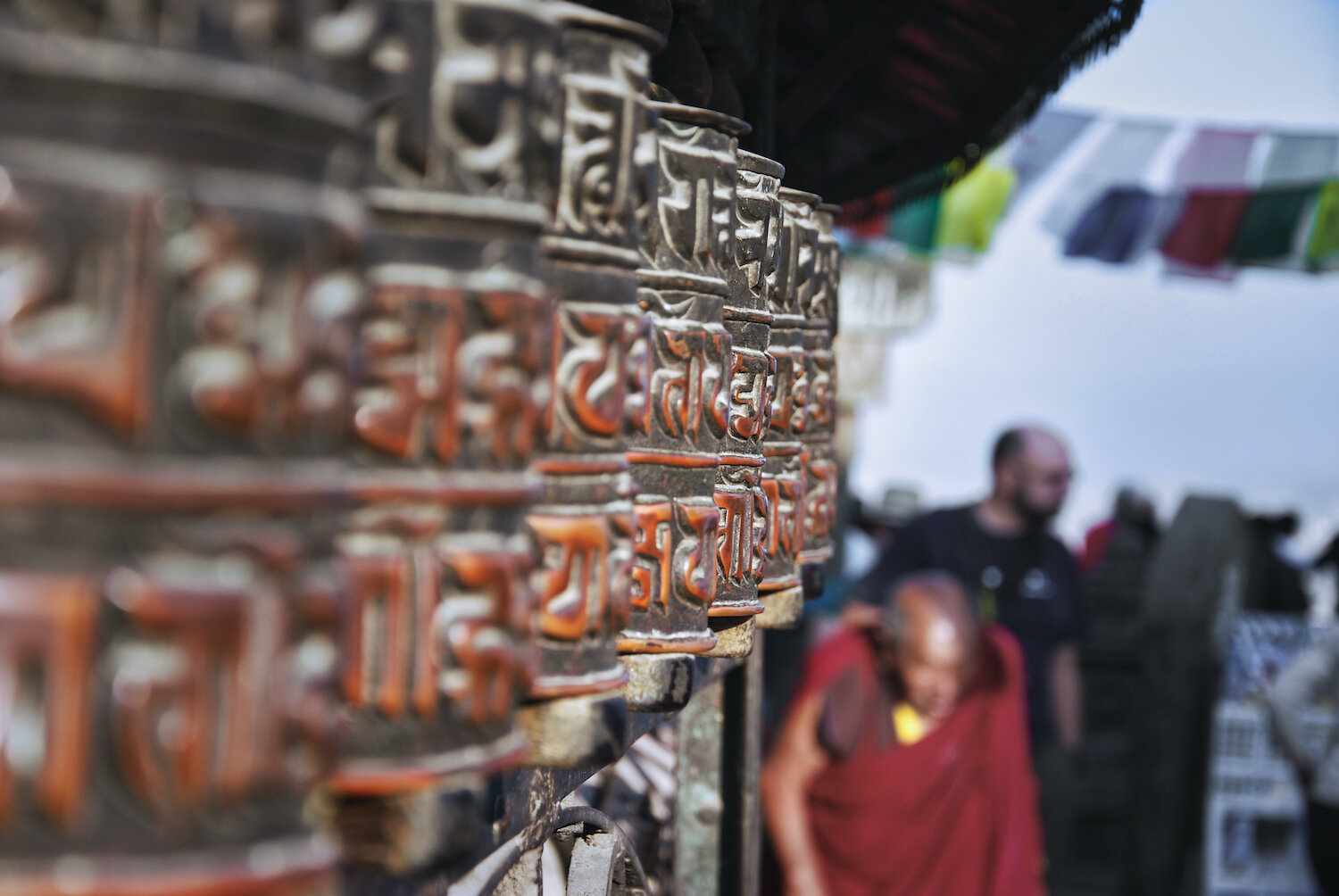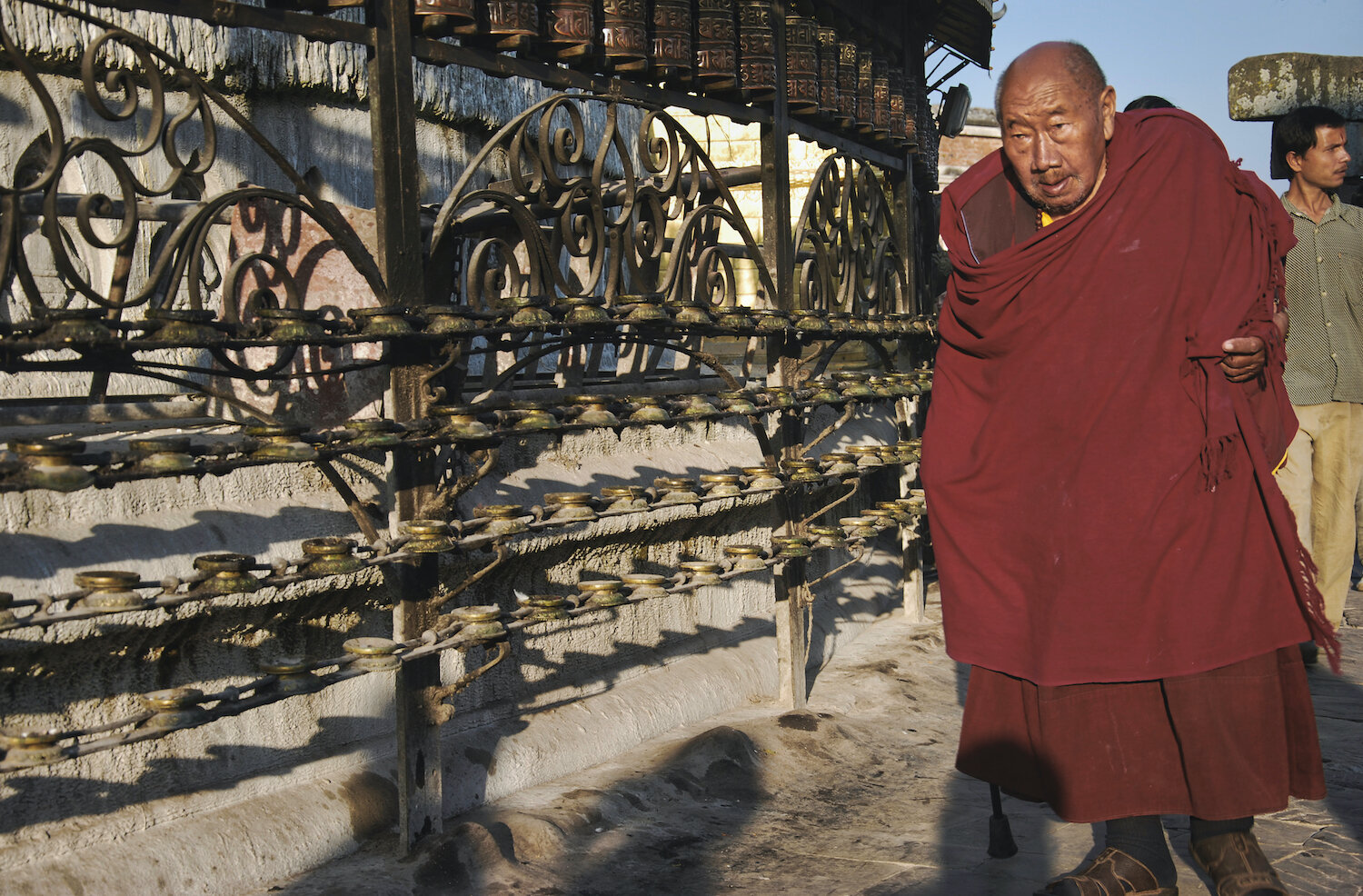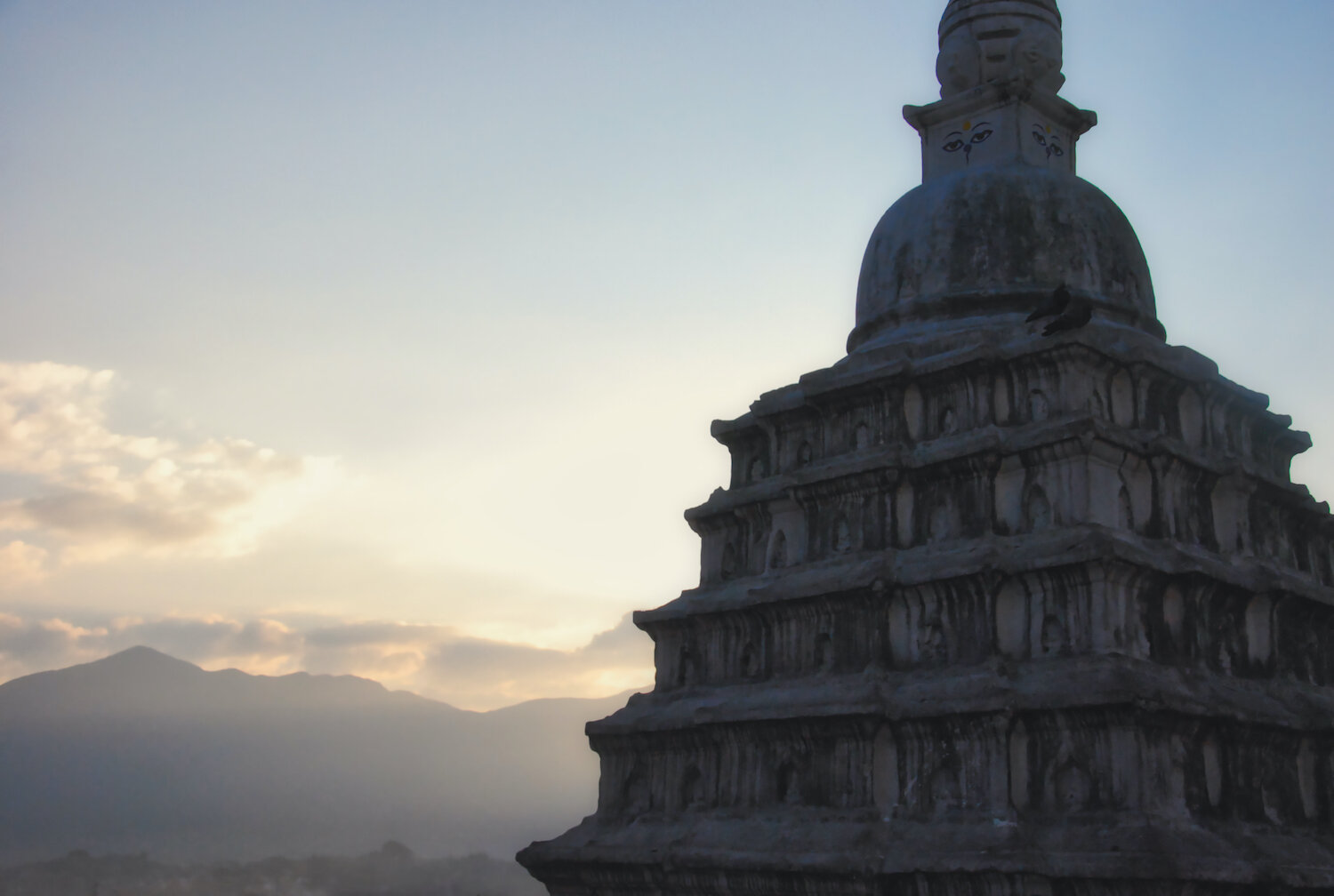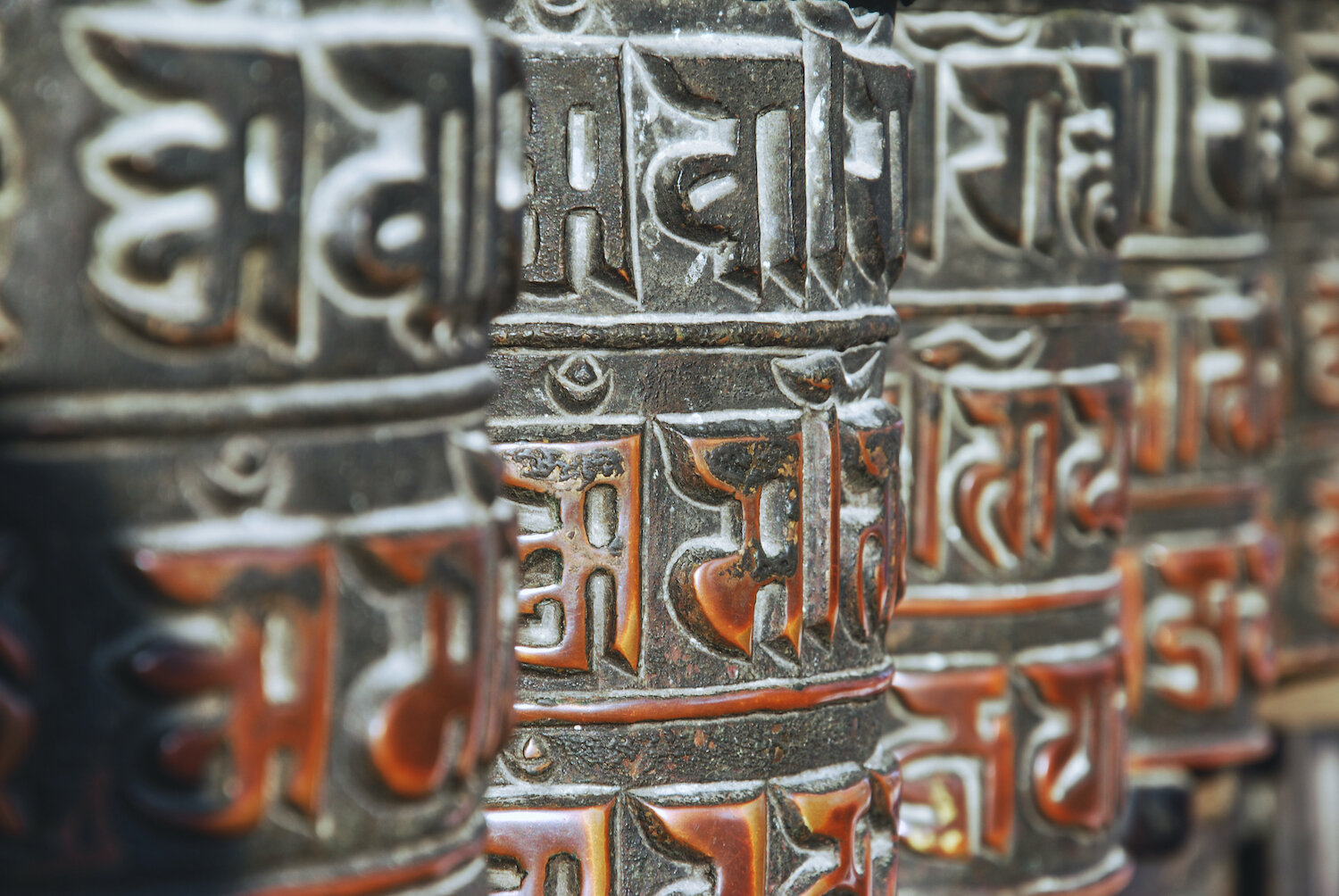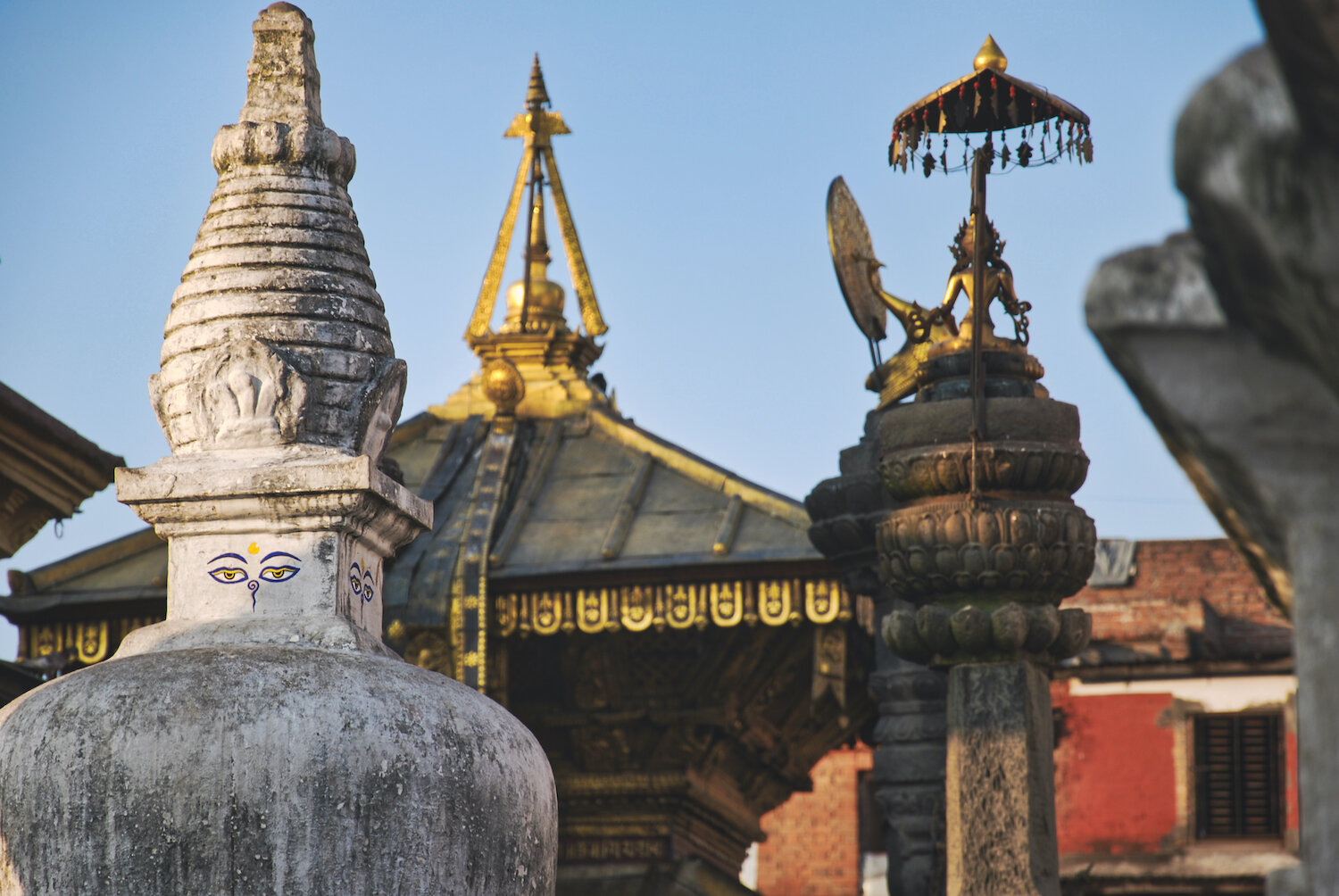90 - Swayambhunath Stupa (Kathmandu, Nepal)
ANOTHER DAY, ANOTHER STROLL. GO WEST. CLIMB HILL. SEE TEMPLE. The journey was the highlight (or lowlight as it were), the destination a mere footnote. My stroll began as a ride, a rickshaw ride. Letting a small Nepali man tow my ass around wasn’t how I wanted to start the day, which is why I had an ulterior motive. Pedal. Pedal like the wind blows. Careful what you wish for, no? I persuaded the pilot to relinquish the reins. It was all downhill from there. Bicycle rickshaws aren’t marketed to six-footers. Who knew? Knee to elbow. Ass to armpit. I looked good. Real good.
Wrestling (or is it steering?) was an issue. I couldn’t do it. It pulled to one side. It had a bit of a pulling problem. Rotate pedals. Sheer left… hard. Struggle. Swear. Repeat. One rotation sent me to the curb where I narrowly missed knocking over a parked motorcycle. Nepali word for “douchebag,” anyone? Steering was hard. Breaking was harder. I couldn’t do that either. People stared. Horns honked. Heart pounded. My co-pilot kept a palm on the handlebars and one on the break, forestalling tragedy.
After too much adrenaline and too many close calls, I relented. My respect for the craft ballooned exponentially. I took my rightful place in the rear… for about twenty seconds. My struggle ended where his began—at a slight incline near a bridge. He gave it the office, but my one hundred ninety pounds overpowered the engine. I couldn’t bear to watch, though I’m certain had I not objected we’d still be there in a Sisyphus-type scenario. I dismounted, paid the fare, and hoofed the rest.
A bridge over troubled water. I paused on the Shobha Bhagawati Bridge overlooking the Bishnumati River and tried not to vomit. It wasn’t easy. Putrid, rancid, noxious, and putrescent. All pertinent adjectives. With raw sewage, garbage piles, and an animal graveyard, there’s something for everyone. Scavengers proliferated—especially the pigs and crows. (They appeared to be working together.) Cows are sacred. Pigs are not. Nepalis eat pigs. Pork is served at restaurants. I ate at restaurants. You are what you eat… blaaahck.
I ventured to the water’s edge for a closer look. The smell was overwhelming. Part of me wished I’d skipped the inspection and moved along. But this was an ecological train wreck—I couldn’t look away. The river provides water for drinking and agriculture, not to mention the cultural/religious significance. A crying shame for sure. When you see things like that, you can’t be a tourist. All residual amusement from the rickshaw circus vanished. Frowny face.
My parade had been pooped on, but it was onward and upward via the stairway to heaven (i.e. Swayambhunath Stupa Complex). Swayambhunath is second only to Boudhanath (also in Kathmandu) in the Tibetan Buddhism stupa hierarchy, sacred to Buddhists and Hindus alike. Why describe when you can plagiarize?
“The complex consists of a stupa, a variety of shrines and temples, some dating back to the Licchavi period. A Tibetan monastery, museum and library are more recent additions…
According to Swayambhu Purana, the entire valley was once filled with an enormous lake, out of which grew a lotus. The valley came to be known as Swayambhu, meaning "Self-Created." The name comes from an eternal self-existent flame (svyaṃbhu) over which a stūpa was later built…
The dome at the base represents the entire world. When a person awakes (represented by eyes of wisdom and compassion) from the bonds of the world, the person reaches the state of enlightenment. The thirteen pinnacles on the top symbolize that sentient beings have to go through the thirteen stages of spiritual realizations to reach enlightenment or Buddhahood…
There are holy monkeys living in the north-west parts of the temple. They are holy because Manjushri, the bodhisattva of wisdom and learning, was raising the hill which the stupa stands on. He was supposed to leave his hair short, but he made it grow long and head lice grew. It is said that the head lice transformed into these monkeys…” (See Wikipedia)
It is an impressive site, though its grandeur was diluted by the stupa’s ongoing renovations (the signature eyes and nose were missing). Hordes of tourists and pilgrims obliterated any sense of spiritual mysticism, and there were enough trinkets on sale to fill a Super Walmart. The holy monkeys in residence can be holy assholes. My fascination with urban primates was on the wane, especially when I discovered they carry a form of herpes. And, yes, human transmission is possible… sassy. Still, even with all that, it’s worth a visit if just for the architecture and view of Kathmandu. Though it sustained damage during the 2015 earthquake, it was managed well and restored quickly.
